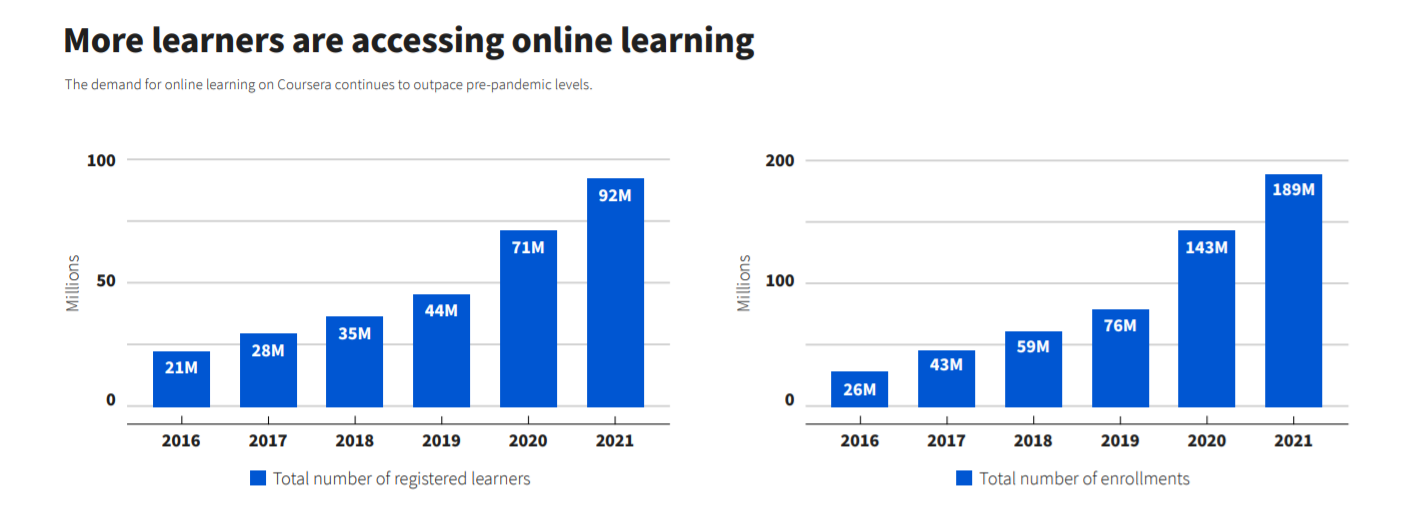Online Learning Trends: What’s Shaping the Future of Education
The world of education has evolved dramatically in recent years, with online learning emerging as a central force. From elementary school to university courses and professional development programs, more students and professionals are turning to online platforms for learning. As technology continues to advance, online learning is not only growing in popularity but also evolving in innovative ways. In this article, we’ll explore the latest online learning trends, how they’re changing the landscape of education, and what the future holds.
The Rise of Hybrid Learning Models
Hybrid learning, which combines both online and in-person education, has emerged as one of the leading trends. This model provides flexibility and convenience while maintaining the personal touch of traditional classroom learning.
Why Hybrid Learning is Gaining Popularity:
-
Offers the flexibility to learn at your own pace
-
Combines the best of both worlds: online convenience and in-person interaction
-
Enables better personalization of learning paths
Many institutions have embraced this model to create an optimal balance between technology and face-to-face interaction, ensuring a comprehensive learning experience for students.
The Growth of Mobile Learning
Mobile learning, or mLearning, is transforming how students engage with educational content. With smartphones and tablets becoming an integral part of daily life, learning on the go has never been easier.
Key Benefits of Mobile Learning:
-
Access anytime, anywhere – Study wherever and whenever you want
-
Engages students through interactive content, including videos, quizzes, and games
-
Makes learning more personalized and accessible
In fact, learning apps are seeing explosive growth as they provide students with on-demand content tailored to their needs. Whether it’s revising for exams or learning a new skill, mobile learning is here to stay.
The Surge in Gamified Learning
Gamification in education refers to the use of game elements—like points, leaderboards, and rewards—to enhance learning experiences. By adding fun, competition, and engagement, gamified learning helps keep students motivated.
Why Gamification Works:
-
Increases student engagement and retention rates
-
Encourages healthy competition and motivation through rewards
-
Makes learning more enjoyable and interactive
Gamified platforms like Kahoot and Duolingo have become incredibly popular, particularly in language learning and skill-based training, showing that combining education with fun can be highly effective.
Increased Use of Artificial Intelligence in Education
AI technology is making waves in almost every industry, and education is no exception. Artificial intelligence is now being used to personalize learning, automate grading, and even provide virtual tutors to help students succeed.
Applications of AI in Education:
-
Personalized learning experiences based on student needs and learning styles
-
Automated grading systems to reduce teacher workload and provide immediate feedback
-
AI-powered tutoring to give students extra support when needed
As AI continues to evolve, its potential to transform online learning is immense, providing both teachers and students with more resources than ever before.
The Power of Microlearning
Microlearning is a trend that focuses on delivering content in short, easily digestible segments. This method helps combat the problem of information overload, making it easier for learners to absorb and retain information.
Why Microlearning is Effective:
-
Short, focused sessions help maintain student attention
-
Great for busy professionals looking to upskill in small time slots
-
Can be tailored to fit a variety of learning styles
Microlearning is especially effective for busy adults who want to learn on the go. Many companies are adopting microlearning platforms to offer their employees quick training on new software or skills.

Virtual Reality (VR) and Augmented Reality (AR) in Education
The use of virtual reality (VR) and augmented reality (AR) in online learning is on the rise, offering immersive and interactive experiences that are impossible in traditional classrooms.
Benefits of VR and AR in Education:
-
Provides hands-on experience in subjects like science, history, and medicine
-
Helps students better understand complex concepts through immersive simulations
-
Enhances student engagement and motivation by making learning more interactive
For example, medical students can practice surgeries in a virtual environment before stepping into an actual operating room, making VR and AR incredibly valuable in specialized education.
The Emergence of Social Learning Platforms
Social learning refers to using collaborative tools and social media to enhance the learning experience. Platforms like Facebook groups, Slack, and Reddit communities have become popular places where learners can exchange knowledge, discuss topics, and help each other out.
Key Features of Social Learning:
-
Students can share resources, ask questions, and collaborate on projects
-
Encourages peer-to-peer learning and knowledge sharing
-
Provides a supportive learning environment outside the classroom
Social learning platforms not only make learning more collaborative but also promote community building, allowing students to stay motivated and connected throughout their educational journey.
Increased Focus on Lifelong Learning
Lifelong learning is no longer just a buzzword—it’s a critical aspect of personal and professional development. Online learning platforms are making it easier for individuals to acquire new skills, whether they want to switch careers, pursue a passion, or stay current with industry trends.
Benefits of Lifelong Learning:
-
Continuous skill development keeps professionals competitive
-
Makes it easier for adults to learn new subjects at any stage in life
-
Encourages a mindset of personal growth and curiosity
In today’s fast-paced world, the ability to continually upgrade your skills is more important than ever. Platforms like Coursera, Udemy, and LinkedIn Learning have made continuous learning a reality for millions of people worldwide.
FAQs About Online Learning Trends
Q1: What are the main benefits of online learning?
Online learning offers flexibility, accessibility, and personalization. You can learn at your own pace, from anywhere in the world, and use technology to tailor your learning experience to your needs.
Q2: How does AI improve online learning?
AI personalizes the learning experience by offering tailored recommendations, automated grading, and even virtual tutoring. It allows students to receive immediate feedback and helps teachers manage large numbers of students more effectively.
Q3: Can online learning be as effective as traditional classroom learning?
Yes, online learning can be just as effective, especially with the rise of interactive technologies like VR/AR, gamification, and social learning platforms. The key is finding the right tools and methods that work for your learning style.
Q4: What is microlearning, and why is it so popular?
Microlearning delivers content in small, focused chunks, making it easier for students to absorb information without feeling overwhelmed. It’s especially effective for busy professionals and learners who need to fit studying into their busy schedules.
Conclusion
The online learning landscape is evolving rapidly, driven by technological advancements and changing learner needs. From hybrid models and mobile learning to the use of AI and VR, the future of education is full of exciting possibilities. Whether you’re a student, professional, or lifelong learner, these trends are reshaping how we acquire knowledge, making learning more accessible, engaging, and effective than ever before.
Embracing these trends is key to staying ahead in today’s fast-changing world. As online learning continues to grow and develop, it will unlock new opportunities for learners of all ages.
Stay curious and continue exploring these innovations to enhance your educational journey!




